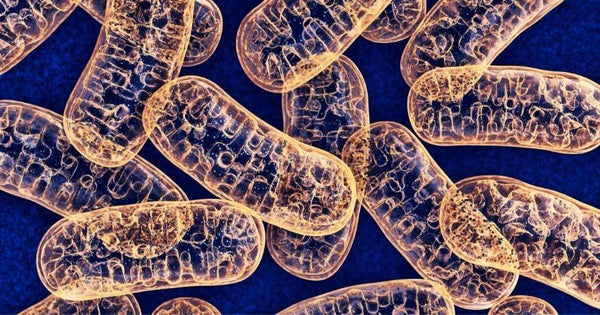Sporty Genes: Lifelong Participation in Organized Sports Keeps Your DNA Young and Mitochondria Healthy

Team sports like soccer (also called football in most countries outside of the United States) and team handball are characterized by an important social factor while combining endurance, interval, and resistance training. In a global strategy to increase physical activity, team sports may offer unique qualities. Though the link between team sports and health has received much attention, most research studies within the field have focused on injuries and performance in elite players and not aging or the prevention thereof.
For the first time, researchers from the University of Southern Denmark and Karolinska Institutet in Sweden investigated the effect of women engaging in team sports over a lifetime on central aging hallmarks: the integrity of the cell’s power-generating structures (mitochondria) and the protective end caps of chromosomes (telomeres). They found a link between elite soccer training and lifelong team handball training to anti-aging mechanisms in immune cells in women, including maintenance of telomeres and superior mitochondrial characteristics.
“As telomere shortening and mitochondrial dysfunction are highly associated with several age-related diseases and mortality, our findings indicate that women engaged in team sports such as [soccer] and team handball may potentially increase their health span and, ultimately, lifespan,” proposed the international research team.
Biomarkers evaluate how we age
So that tissues and organs remain healthy, cells need to continuously replicate to cover (and recover from) the demands of daily life. New cells are produced, as old cells are spent and need replacements. For this to work, genetic packages known as chromosomes need to be maintained, protecting DNA from getting damaged and preserving our genomes — our entire collection of DNA — for future cellular generations. Researchers believe that this cycle of replication may be tied to the length of possible human lifespans.
Telomere length is one specific biomarker that helps evaluate cellular age and the health of the replication process. Telomeres are structures that cap the ends of chromosomes and maintain genome stability and preserve genetic information. These structures become shorter with each cycle of cellular replication and are an indicator of the age of cells and their DNA. When telomeres become too short, replication is no longer possible and cells become dysfunctional and eventually die.
Researchers have proposed the shortening of telomeres as a risk factor for several human conditions, including chronic inflammation, dementia, diabetes, cardiovascular disease, and several types of cancers (1). This relationship with aging works the other way as well, as longer telomeres have been associated with a longer lifespan and healthier living (2).
Another biomarker to evaluate aging is mitochondrial function. These energy generators are key to maintaining cells in working order. Regulation of telomeres and mitochondrial function seems to have a direct link to aging and age-associated development of diseases. Impaired mitochondrial function can add to the aging process by compromising the production of cellular fuel and promoting tissue oxidation through excessive production of harmful compounds called reactive oxygen species (ROS) (3). These ROS cause damage at the cellular level and contribute to the aging process.

Mitochondria are our cells' energy powerhouses.
Physical activity can reverse biomarkers for aging
Recent research shows that exercising frequently can help keep you healthy as you age. People that engage in regular physical activity are overall healthier and have a decreased risk of chronic diseases in old age (4). This might have to do with how exercise preserves telomere length and promotes mitochondrial health. One study from Germany found that endurance training for 6 months helped lengthen telomeres in previously inactive adults (5).
Regarding mitochondrial function, a group of Canadian researchers demonstrated that moderate aerobic exercise can help restore mitochondrial function in old age by increasing the production of new mitochondria, promoting the production of antioxidant enzymes, and maintaining cellular fuel output (6). Evidence shows that participating in regular physical activity is the gold standard for maintaining health and reducing chronic disease risk in old age.

A lifelong commitment to organized sports can reward you with health in old age
A group of Danish and Swedish researchers recently published an article on the benefits of long-time organized sports participation in the journal Scientific Reports (7). The study reviewed data from a group of 130 women from different stages of their lifespan. Researchers compared a group of young soccer players against data from a similar group of untrained women of the same age. The authors also compared a group of older, lifelong handball players against similarly aged women who did not participate in sports.
The research team observed the benefits of exercise from a young age, as demonstrated by telomere length and mitochondrial markers. Telomere length was 22–24% higher in the soccer players compared to their untrained peers, and mitochondrial integrity was 19-20% higher for these participants. Even though this study did not show significant differences between telomere length in the groups of older participants, it did show an increase in levels of a molecule that regulates mitochondrial production called PGC-1α for the lifelong handball players. This might be an adaptive response intended to preserve mitochondrial function in old age.
"Our legacy consists of DNA that is packed in chromosomes. When cells divide, the inheritance is copied, but with each cell division the ends of the DNA threads get shorter. The so-called telomeres are shortened, which causes us to age. It is remarkable that engaging in team sports like soccer and handball helps women to maintain longer telomeres and healthy mitochondria. It may potentially increase their health span and, ultimately, lifespan, as shorter telomeres and mitochondrial dysfunction are both associated with a number of age-related diseases and mortality," says senior researcher Muhammad Asghar, the study's shared senior author, of the Department of Medicine, Solna at Karolinska Institutet.
These findings add to the evidence that shows the impact of physical activity on two central hallmarks of aging, telomere length and mitochondrial function. This emphasizes the importance of sustained, regular exercise as a way of preserving cellular health and promoting healthy aging. Consistent participation in organized sports carries benefits for all stages of the lifespan.
References:- Herrmann M, Pusceddu I, März W, Herrmann W. Telomere biology and age-related diseases. Clin Chem Lab Med. 2018;56(8):1210-1222. doi:10.1515/cclm-2017-0870
- Njajou OT, Hsueh WC, Blackburn EH, et al. Association between telomere length, specific causes of death, and years of healthy life in health, aging, and body composition, a population-based cohort study. J Gerontol A Biol Sci Med Sci. 2009;64(8):860-864. doi:10.1093/gerona/glp061
- Sahin E, DePinho RA. Axis of ageing: telomeres, p53 and mitochondria. Nat Rev Mol Cell Biol. 2012;13(6):397-404. Published 2012 May 16. doi:10.1038/nrm3352
- Daskalopoulou C, Stubbs B, Kralj C, Koukounari A, Prince M, Prina AM. Physical activity and healthy ageing: A systematic review and meta-analysis of longitudinal cohort studies. Ageing Res Rev. 2017;38:6-17. doi:10.1016/j.arr.2017.06.003
- Werner CM, Hecksteden A, Morsch A, et al. Differential effects of endurance, interval, and resistance training on telomerase activity and telomere length in a randomized, controlled study. Eur Heart J. 2019;40(1):34-46. doi:10.1093/eurheartj/ehy585
- Nilsson MI, Tarnopolsky MA. Mitochondria and Aging-The Role of Exercise as a Countermeasure. Biology (Basel). 2019;8(2):40. Published 2019 May 11. doi:10.3390/biology8020040
- Hagman M, Fristrup B, Michelin R, Krustrup P, Asghar M. Football and team handball training postpone cellular aging in women. Sci Rep. 2021;11(1):11733. Published 2021 Jun 3. doi:10.1038/s41598-021-91255-7





